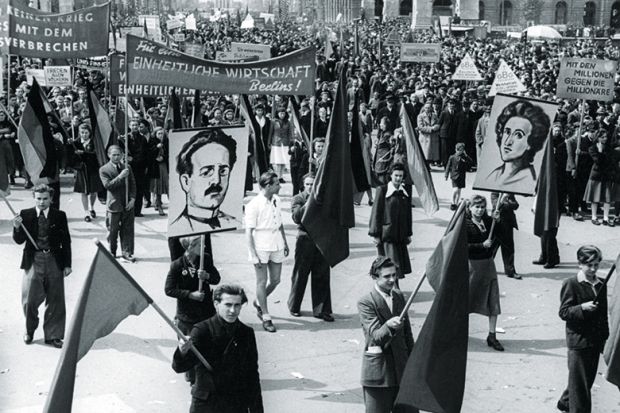In April 1919, the papal nuncio in Munich reported to Rome his impressions of the Soviet regime that had established itself in the Bavarian capital following the collapse of the German monarchy the previous year. Under the leadership of Kurt Eisner, a group of socialists had declared Bavaria a republic. A civil war ensued, leading to Eisner’s assassination, whereupon the communist regime that had already taken control in Berlin dispatched a Russian gentleman, Max Levien, to restore a Marxist order of sorts in Munich. To better inform himself, and his masters in Rome, the nuncio sent an aide to the headquarters of Bavaria’s new (though, as it turned out, short-lived) communist government. The aide dutifully met with government officials. What particularly caught his eye was “a gang of young women…Jewish like all the rest of them…The boss of this female rabble was Levien’s mistress, a young Russian woman, a Jew.” As to Levien himself, the aide declared that he was “a young man…also Russian and a Jew. Pale, dirty, with drugged eyes, hoarse voice, vulgar, repulsive.”
The name of the nuncio was Eugenio Pacelli, the priest who in 1939 ascended to the papacy. Willingly misled by his aide, Pacelli convinced himself, and his masters in the Eternal City, that the entire communist government of Bavaria was a Jewish conspiracy – and, indeed, that Bolshevism itself was none other than a Jewish enterprise having as its ultimate objective the overthrow of Christendom.
As a matter of fact, Levien (who looked nothing like the description proffered by Pacelli’s assistant) was not Jewish. But what did truth matter in the face of dogma? As Paul Hanebrink demonstrates in this masterly account, the myth of Judaeo-Bolshevism rose on a tide of hysteria whipped up by the chaos in central Europe that marked the end of the Great War. Rosa Luxemburg, the Polish-German revolutionary, certainly was Jewish. But her lover and co-conspirator Karl Liebknecht wasn’t. Trotsky and Zinoviev were Jewish. Kerensky wasn’t. No matter! All were lumped together by counter-revolutionary nationalists as part and parcel of a Jewish conspiracy. This in turn fed easily into a vicious racist rhetoric that characterised much of the discourse of the political right in Europe between the two world wars and which was of course a cornerstone of the Nazi enterprise.
The myth of Judaeo-Bolshevism was not conjured out of thin air. Hanebrink is surely correct in locating its origins within a much older Christian tradition that charged the Jews with “heresy, misrule, and social disharmony”. This tradition in turn built upon legends of diabolical fanaticism in which Jews were said to engage. The forged Protocols of the Elders of Zion were widely accepted throughout Europe (including the UK) precisely because – building on this tradition – they seemed so plausible, not least as an explanation of the collapse of the old order.
We should not, therefore, find it at all odd that the myth survived the Holocaust intact. As Hanebrink demonstrates, it was seized upon by polemicists searching for an explanation of the foundations of Soviet rule in eastern Europe after 1945, despite the fact that Jews were among the most prominent victims of Stalinist tyranny.
Geoffrey Alderman is professor of politics and contemporary history at the University of Buckingham.
A Specter Haunting Europe: The Myth of Judeo-Bolshevism
By Paul Hanebrink
Harvard University Press
368pp, £21.95
ISBN 9780674047686
Published 30 November 2018



